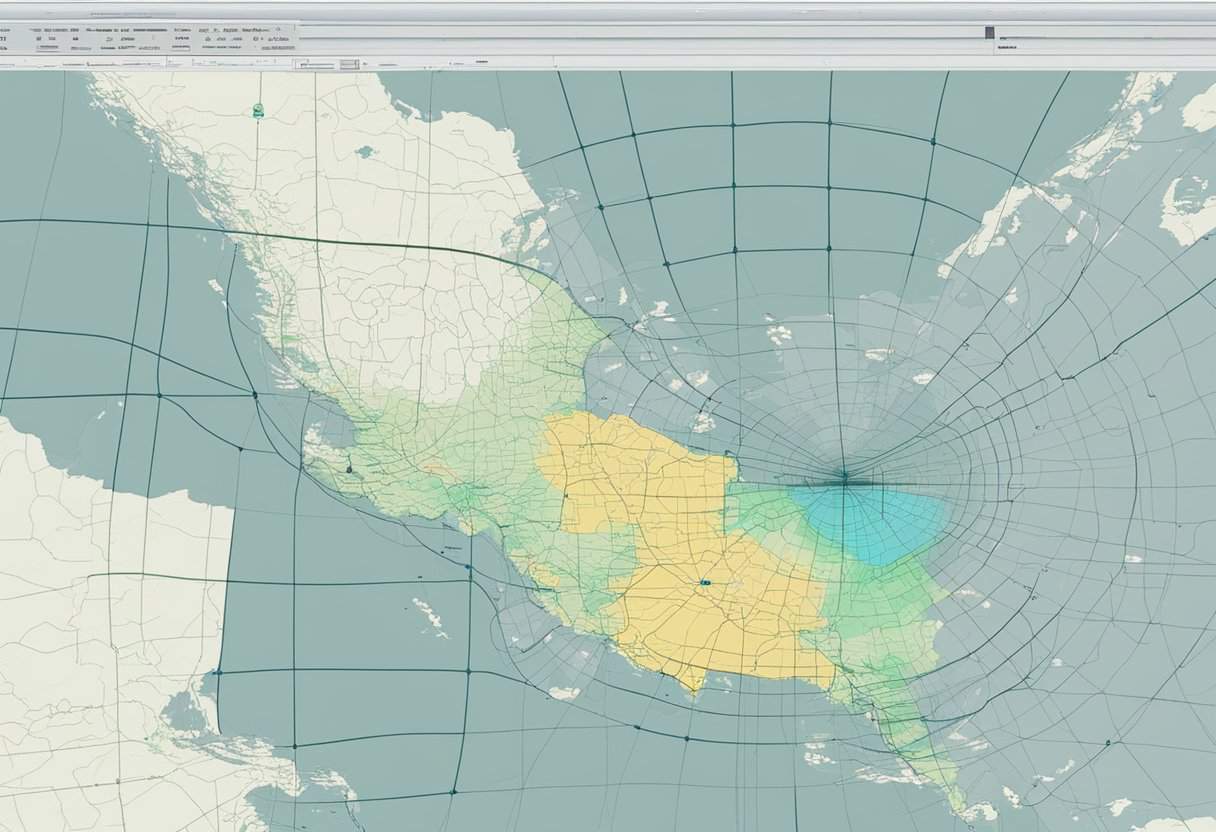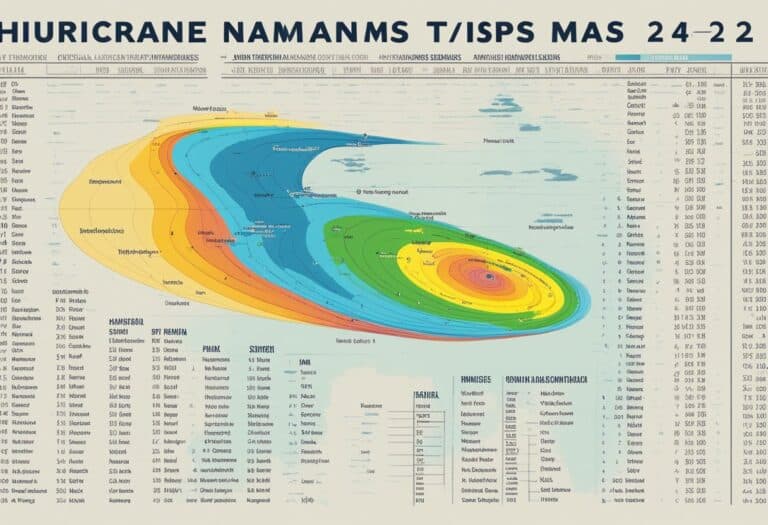Automatic Packet Reporting System, or APRS, is a digital communication protocol used by amateur radio enthusiasts to transmit real-time data such as messages, weather reports, and location information.
Its versatility allows for a wide range of uses, from tracking vehicles and equipment to facilitating efficient communication during events and emergencies. APRS integrates GPS technology and short digital radio bursts to convey bits of information across an ad-hoc network, viewable on internet-connected devices or specialized receivers.
Understanding APRS begins with grasping the essentials of packet radio, which enables the transmission of small data packets across radio frequencies. Each packet contains information about the sender, the intended recipient, and the data or location details. Radio operators and hobbyists use APRS for various purposes—including search and rescue operation coordination and remote sensor monitoring—due to its real-time response capability and wide-reaching community support.
The practical applications of this innovative tool are expanding as the technology and the community continue to grow.
APRS uses radio & GPS for real-time info sharing (location, weather, messages) among amateur radio users. Track positions, send messages, get weather data, and connect online. Use responsibly for optimal network performance.
APRS Fundamentals

APRS, or the Automatic Packet Reporting System, is a digital communications protocol that integrates radio broadcasting with digital data to provide real-time tactical information such as live tracking and messaging. Now, let’s dive deeper into the essentials of APRS.
Overview of APRS
APRS was primarily created by Bob Bruninga, known by his callsign WB4APR. It serves as a multifaceted communication system utilized largely in the amateur radio community. Its versatility allows it to support various types of information including GPS location data, weather reports, and messages.
History and Development
Developed in the late 1980s, APRS has since evolved from simple text-based messages to accommodating complex applications. Bob Bruninga crafted the protocol to enable digital communication of information among a wide range of devices without the need for a centralized server, thus enhancing the value of the radio spectrum with rich data.
Key Functions of APRS
APRS is not just for location tracking; its key functions include:
- Real-time Position Reporting: Transmit your location data to others with GPS integration.
- Weather Reporting: Stations can send weather data, which can be critical during emergency situations.
- Messaging: Allows for direct or group text messaging, enhancing communication among users.
- Efficient Network Utilization: It intelligently uses the available network resources, like the path settings for packet forwarding.
These elements showcase APRS as a robust platform for real-time communication and information exchange in the amateur radio field.
Technical Aspects of APRS
You may already know that APRS stands for Automatic Packet Reporting System. It’s a digital communications protocol used by amateur radio operators to transmit real-time data such as weather reports, GPS coordinates, and other relevant information.
How APRS Works
APRS combines GPS and radio technology to track objects and share information in real-time. You transmit packets of information, which can include your location, weather data, or messages. These packets are picked up by digipeaters or directly received by others monitoring the same frequency.
APRS Protocol: APRS messages are primarily sent via VHF radio frequencies, around 144.39 MHz in North America. Each packet consists of a digital frame that carries a source call sign, a destination, a path, and the payload information.
APRS Equipment
To utilize APRS, you need specific equipment: an amateur radio transceiver, a GPS receiver, and a Terminal Node Controller (TNC) or a device with similar functionality. Modern radios may have built-in TNCs and APRS features.
- Transceiver: Transmits and receives radio signals.
- GPS: Provides your geographic information.
- TNC: Converts the data to radio waves and vice-versa.
Understanding Digipeaters
Digipeaters, short for digital repeaters, listen for your APRS transmissions and automatically retransmit them, increasing the range over which your packets can travel.
Key Functions:
- Receiving: Listening for APRS packets.
- Digipeating: Re-transmitting packets to other digipeaters or stations.
APRS Internet System (APRS-IS)
The APRS-IS allows APRS users to connect their data to an internet-based network, expanding the reach of APRS packets beyond the immediate radio range.
- APRS-IS: A network of internet-connected servers that interface with the RF side of APRS.
- Function: Enables wider distribution and access of APRS data.
Frequency Utilization
The most commonly used APRS frequency is 144.390 MHz in North America. You should be cautious to use the right frequency based on your geographic location to avoid interference with other services.
Usage:
- Transmit: Sending out your packets.
- Receive: Listening for APRS activity.
APRS Usage and Applications
Automatic Packet Reporting System (APRS) is not just for tracking; it’s a versatile tool for real-time communication across a network. By integrating location data, weather reports, and messaging, APRS serves a multitude of purposes spanning different applications.
Tracking and Positioning
APRS allows you to track locations using GPS devices. This feature is crucial for logistics, where knowing the location of vehicles or assets is vital. By sending location data to a map on a network, real-time tracking is possible on a mobile device or computer.
Data Communication
You can exchange messages and data using APRS, enabling a reliable form of communication. This function is particularly useful in emergency communications where other systems may fail, establishing APRS as a critical tool for first responders.
Weather Integration
With APRS, you’re able to connect to weather stations, allowing for real-time weather data integration. This translates to improved weather reporting on a local and broader scale, making it valuable for enthusiasts and professionals who require up-to-date weather information.
Messaging Capabilities
APRS offers the ability to send and receive text messages directly between users. This capability enhances emergency services’ efficiency and supports everyday communication needs within the APRS network.
In your use of APRS, these functionalities enhance your communication and information capabilities, whether you’re tracking assets, exchanging critical data, monitoring the weather, or sending messages.
Devices and Interfaces
Understanding the range of devices and interfaces is crucial to effectively utilizing Automatic Packet Reporting System (APRS). Your experience with APRS can vary greatly depending on the hardware and software you choose.
APRS-Enabled Transceivers
Your foray into APRS begins with APRS-enabled transceivers, such as the Kenwood TH-D74 and various Yaesu models. These devices integrate a modem and a GPS receiver to transmit your location and messages directly over radio frequencies. Kenwood and Yaesu are renowned for their reliability in the APRS community.
Software for APRS
Software plays a pivotal role in the APRS ecosystem. Dire Wolf is an example of a soundcard interface that decodes and encodes APRS data, turning your computer into a virtual TNC (Terminal Node Controller). There’s also PinPointAPRS, which allows for tracking and messaging on your PC. This software gives you the power to leverage APRS without dedicated hardware.
Mobile and Internet-Based APRS Applications
For added convenience, mobile and internet-based APRS applications allow you to access the APRS network on the go. Android and Apple devices can run apps like APRSdroid and PocketPacket, transforming your smartphone into an APRS device. Internet gateways, or igates, connect local RF (radio frequency) networks to the internet, enabling wide-area communication through internet-linked gateways.
Operational Procedures
When setting up and using Automatic Packet Reporting System (APRS), it’s crucial to understand the fundamental procedures to ensure reliable communication and tracking. Proper setup, understanding of digipeating and routing, and effective management of APRS settings are key for optimal operation.
Setting up an APRS Station
To begin using APRS, your first step is to configure an APRS station. This involves a transceiver, a GPS unit (to report your location), and a Terminal Node Controller (TNC) or a software equivalent to encode and decode APRS data. Ensure that the GPS is accurately relaying your course and speed, as this information is transmitted along with your positional data. Consider your beacon rate carefully — this controls how often your location is transmitted. Frequent updates can provide detailed tracking but may congest the network.
Digipeating and Routing
APRS relies on digipeating, where stations called digipeaters receive packets and retransmit them. This extends the range of APRS communications. Use the settings WIDE1-1 and WIDE2-2 in your path settings to make efficient use of digipeaters. An iGate is a type of APRS station that connects to the internet, allowing APRS packets to be transferred from the RF network to the APRS-IS online system, providing broader dissemination of information.
Managing APRS Settings
Your APRS settings determine how your station interacts with the network. You’ll need to configure the TNC or software to define your beacon rate and data path. Manage your station’s algorithms for digipeating and decide if your station will act as an iGate. It is crucial to understand how to operate within the APRS network responsibly, conserving bandwidth by optimizing your settings.
These procedures lay the foundation for effective communication using APRS. Proper initial setup, route configuration for extended transmission reach, and diligent management of operational settings will allow you to use APRS efficiently and effectively.
Advanced APRS Features
APRS (Automatic Packet Reporting System) offers a robust set of features that extend its functionality beyond simple position reporting. You’ll find sophisticated telemetry and messaging services that cater to a variety of real-time communication needs.
Telemetry and Reporting
APRS telemetry is a powerful feature that allows for the transmission of real-time data from sensors, often including weather station telemetry. Data can include temperature, wind speed, and other environmental parameters, transmitted from remote weather stations. You, as a user, can access this data, which may be essential for outdoor activities or scientific research. Stations that use digipeaters (digital repeaters) further enhance this capability by relaying telemetry data over greater distances and to more users.
- Real-Time Data: Access up-to-the-minute information from remote sources.
- Expanded Range: Digipeaters increase the coverage area, ensuring that telemetry is widely accessible.
Bulletin and Announcement Services
The APRS network also includes services for bulletins and announcements, allowing you to receive important updates and information. These bulletins are text messages that are addressed to all users, and they can include event information or alerts. Users can also make use of announcement features to broadcast messages to a targeted audience, which is particularly useful in coordinating events or disseminating local information.
- Bulletins: Receive alerts and updates intended for all APRS users.
- Announcements: Send targeted updates to specific APRS user groups or regions.
By leveraging advanced APRS features like telemetry reporting and bulletin services, you can stay informed and connected in real-time, no matter where your adventures take you.
APRS in Special Events and Emergency Situations
APRS (Automatic Packet Reporting System) plays a crucial role in enhancing situational awareness and communication, particularly during special events and emergency situations. This system leverages GPS tracking combined with radio communications to aid in various operations.
Hiking and Marathon Support
When you embark on hiking adventures or participate in marathons, APRS provides a reliable method to track your location in real time. This is particularly useful for event organizers to monitor the progress and safety of participants. In events like the Golden Packet Event, APRS helps in establishing a robust communication network across vast distances, even when traditional cellular networks are not available.
Support for Search and Rescue Operations
For search and rescue teams, APRS enhances their capability to locate and assist individuals in distress. By utilizing APRS-enabled transceivers, teams can coordinate efforts more effectively by visualizing movements on an APRS map. This system significantly reduces response times and improves the overall efficiency of rescue operations.
APRS in Emergency Communications
In the event of a catastrophe where conventional communication infrastructures are compromised, APRS provides a failsafe emergency communications network. You can transmit vital data and messages via APRS to maintain communication with emergency responders and volunteers. APRS has even been used in conjunction with the International Space Station for educational purposes and to maintain a communication link during critical missions.
Community and Network Expansion
As the Automatic Packet Reporting System (APRS) grows, so does its community and network. You’re part of a global system that connects amateur radio operators through a variety of events, activities, and international collaborations.
Global APRS Network
The APRS network spans the globe, with satellites and terrestrial repeaters relaying information. As you key into your APRS device, you’re joining a network that operates seamlessly across countries. Ham radio enthusiasts use APRS for real-time communication, position reporting, and messaging.
Events and Activities Involving APRS
Participate in the Golden Packet Event, where APRS packets are relayed along the Appalachian Trail. This illustrates the robust capabilities of the APRS network. Hamfests also serve as hotspots for APRS activity, with operators showcasing advancements and exchanging knowledge.
APRS on the International Stage
APRS isn’t just confined to the Earth’s surface; it’s in orbit too. The International Space Station (ISS) carries an APRS digipeater, letting it act as an important relay point in the system. This takes your radio signals from local to cosmically distant communities, showcasing APRS’s versatility and international reach.
Best Practices and Etiquette
APRS (Automatic Packet Reporting System) is not just about the right hardware and software; it’s also about responsible use. Your approach to APRS should always consider network efficiency and courtesy to fellow users.
Optimal Configuration Settings
Frequency: Ensure your device is set to the correct APRS frequency, which for North America is generally 144.390 MHz. This ensures that you are transmitting where other APRS users will expect to find your packets.
Baud Rate: Use the standard baud rate of 1200 baud for APRS transmissions. Higher rates may lead to incompatibility and network issues.
Audio Levels: Be mindful of your transmitter’s audio levels. They should be set to avoid overdriving the signal, which can cause distortion and interference — known as QRM — on the APRS network.
Digi and IGates Settings: If you operate a digipeater (Digi) or an Internet Gateway (IGate), configure them to support wide-area (WIDE) settings responsibly. Overuse of WIDE paths can flood the network. Use settings like WIDE1-1 or WIDE2-1 as per your local APRS guidelines.
Effective APRS Operation
Use of APRS: Make your APRS activity count. Transmit meaningful information such as your location during travel or events, instead of adding unnecessary traffic to the network.
APRS Messaging: When messaging, keep it concise. Remember that APRS is not designed for long conversations and can contribute to congestion if overused.
Maintaining the integrity of the APRS network is a collective responsibility. Adhering to these best practices ensures a positive experience for you and your community.
Frequently Asked Questions
Before diving into the specifics, it’s important for you to understand that APRS is not just about location tracking; it’s a versatile communication system within amateur radio. Here’s a closer look at some common inquiries about APRS functionalities and requirements.
What purposes does APRS serve in communication?
APRS, or Automatic Packet Reporting System, serves multiple purposes in communication, including real-time positional broadcasting, weather reporting, and sending short messages between operators.
How does APRS tracking function on a map?
APRS tracking functions on a map by using GPS data transmitted by a user’s radio equipment which is then plotted on a digital map, allowing others to see their location in real-time.
What role do digipeaters play in the APRS network?
Digipeaters are crucial in the APRS network; they receive packets and retransmit them, extending the range over which APRS signals can travel and ensuring wider coverage.
Is an amateur radio license required to operate on the APRS frequency?
Yes, to operate on the APRS frequency, you must have a valid amateur radio license as APRS operates within amateur radio frequencies.
What types of information can be shared through APRS transmissions?
Through APRS transmissions, you can share a variety of information, including your GPS location, weather data, telemetry, and short text messages.
How does an APRS iGate facilitate the exchange of data?
An APRS iGate receives APRS packets from local radio operators and forwards them to an internet-based APRS network (APRS-IS), allowing for broader dissemination of the data transmitted.







